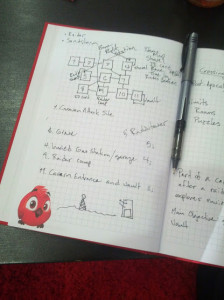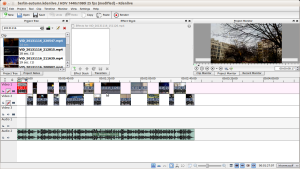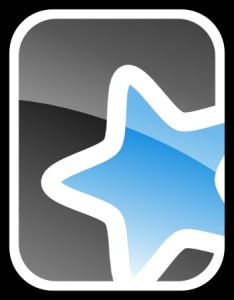 Once a month three guys throw the Mini Game Jam; it’s basically an 8 hour workshop with the purpose of creating a game from scratch. It starts with a get-to-know-you exercise: every participant is given five pieces of paper with the same number printed on each; the goal is to talk to five different people and exchange numbers. Theme’s are proposed before hand through Meetup, and then voted on by all the participants through a dedicated website. You can vote three ways: like, dislike, indifferent. Here’s what came to the top yesterday:
Once a month three guys throw the Mini Game Jam; it’s basically an 8 hour workshop with the purpose of creating a game from scratch. It starts with a get-to-know-you exercise: every participant is given five pieces of paper with the same number printed on each; the goal is to talk to five different people and exchange numbers. Theme’s are proposed before hand through Meetup, and then voted on by all the participants through a dedicated website. You can vote three ways: like, dislike, indifferent. Here’s what came to the top yesterday:
– local multi player!
– crossing the desert
– Games with procedural created stages. In general, games that aren’t the same if you play them again.
Coming in at fourth was the theme I suggested, “Alone in the Dark”. So close, and yet so far…I really wanted to do some kind of Lovecrafty story.

Anyone who has ever played a text adventure knows what this is: the standard mapping system of players everywhere.
Per my last post, I wanted to try to do a text adventure with Inform. I selected “crossing the desert” and decided to place my story in a post-apocalyptic setting. I brain stormed for about an hour by myself and had come up with some rough ideas for a couple of puzzles and story line in an environment of some 14 locations. I was sitting by myself in a corner and had most of the design dialed in, when one of the participants walked up to me and explained that he was late in showing up and hadn’t found a team yet. I told him that I was working on a text adventure and that it probably wouldn’t be very interesting, but I’d be more than happy to show him what I had come up with so far and show him the tools I was using. As I explained the story and showed him Inform, he got into it and wanted to work with me. We started exchanging ideas and the game design got better and more focused.
Then we sat down and started coding. I set up a repo on github for the game, so that we could each work on parts and merge them. We broke down the task into smaller parts with the first objective to get all the rooms in place and make sure that they were connected properly. By the end of the game jam, we had a working environment that you could move through as designed and a few objects that you could interact with.
At 21:00, the Jam was declared over and the teams gave presentations of what they’ve done. It was pretty amazing what people were able to do with a typical work day. Some of the titles were just as good as anything that came out in the 80’s: titles that people paid money for. A lot of the participants used a platform called Unity to build their projects. I’ll have to learn more about that. It was really cool to see the creativity and skill.
Lessons learned: a lot of time was wasted fighting with Github and Inform7 due to simple beginner mistakes. We were struggling to bring the story to life because we didn’t know enough about our tools. I really need to sit down and learn Inform better so that the technical side becomes more of an aid than a hindrance. Next time, I’d like to be able to come up with a design, implement it, and then publish it as a browser playable game. Then I could pitch the game in the presentation and, if anyone is interested in playing it, they can do so. Presenting a text adventure is a little challenging: there are no pretty graphics to look at.
So, here’s what would be on the back of the box if my text adventure was finished and on store shelves in the 80’s.
In the ashes of the aftermath, every man does what he must to survive. Slowly, settlements have come back from the brink and opened trade routes across the desolate waste land, bringing needed goods across the dangerous landscape. As a caravan guard, you knew the dangers. But danger means money, and the need for the one out weighed the fear of the other.
They came out of nowhere on the 13th day. Ambush! In the middle of the fight, your gun jammed and, when you took cover to try and fix it, an explosion went off, taking away consciousness. You don’t know how much time has passed, but, when you finally woke up, you find yourself alone in the ruins of a battle field. Nothing of value remains. You have no food and no water. Can you find your way to provisions and make it back home?













